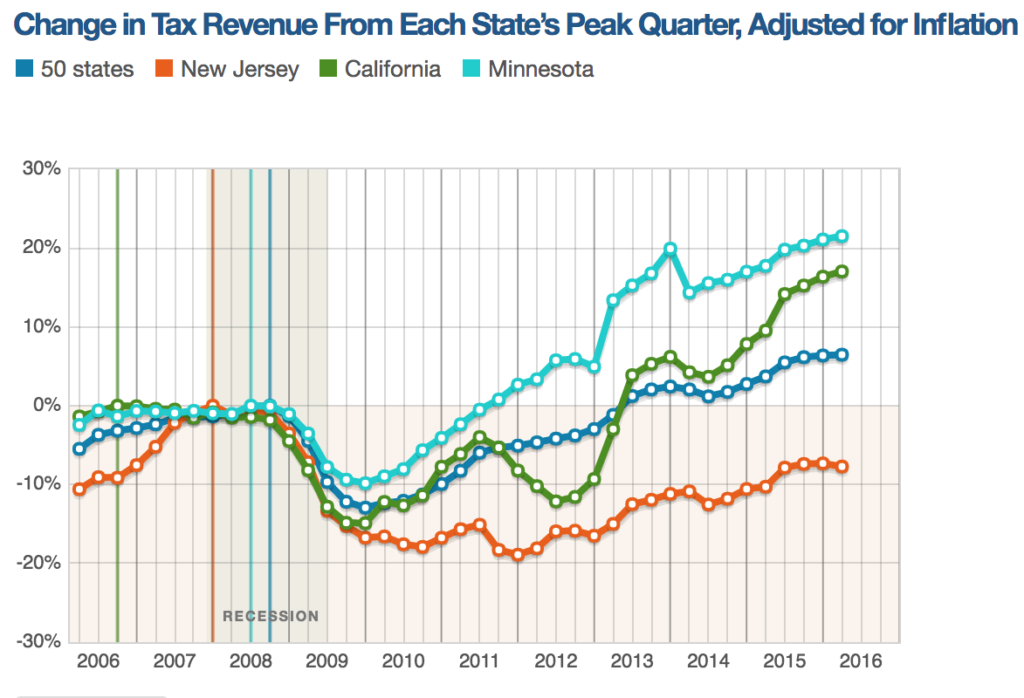Yesterday, as part of a campaign launched this fall by New Jersey Policy Perspective, New Jersey Citizen Action and the Anti-Poverty Network of New Jersey, 60 New Jersey-based organizations representing hundreds of thousands of residents sent a letter to Senators Booker and Menendez, urging them to continue their efforts to expand the federal Earned Income Tax Credit for working adults without children. This expansion would help between 343,000 and 504,000 New Jersey workers.
The letters (view them here and here) identify several key political windows in which the EITC expansion could become a reality, even in an admittedly tough political climate to advance progressive policies. The fact that the EITC has a long history of bipartisan support helps increase the likelihood that it could be part of ongoing discussions about tax reform or infrastructure spending in 2017.
NJPP is glad to join 59 other leading New Jersey organizations today in reminding our U.S. Senators that expanding the Earned Income Tax Credit for low-wage workers not raising children remains a priority, even as we face incredibly daunting political headwinds in D.C.
Our Senators will have their hands full fighting some serious threats to low-income and middle-class Americans, but they should also be prepared to advance a proactive and bipartisan agenda that can boost working people – and this EITC expansion falls squarely into that category.
- 1199 SEIU
- ACCSES New Jersey
- The Affordable Homes Group
- Amalgamated Transit Union – New Jersey State Council
- American Federation of State, County and Municipal Employees District 1
- Anti-Poverty Network of New Jersey
- Bethel AME Church (Woodbury) – Rev. Charles Boyer, Pastor
- BlueWave New Jersey
- Catholic Charities – Diocese of Trenton
- Communications Workers of America – New Jersey
- Communications Workers of America – Local 1039
- Communications Workers of America – Local 1081
- CUMAC
- Elizabeth Coalition to House the Homeless
- Family Voices New Jersey
- The FoodBank of Monmouth and Ocean Counties
- Garden State Equality
- Greater New Jersey United Methodist Church – Palisades District
- Hackensack Environmental Justice Green Drinks
- Health Professionals and Allied Employees
- Holy Trinity Lutheran Church, Hasbrouck Heights
- HomeFront
- Housing and Community Development Network of New Jersey
- Hyacinth AIDS Foundation
- Ironbound Community Corporation
- Jewish Family Service of Atlantic & Cape May Counties
- League of Women Voters of New Jersey
- Lutheran Episcopal Advocacy Ministry of New Jersey
- The Mercer Alliance to End Homelessness
- Monarch Housing Associates
- National Association for the Advancement of Colored People New Jersey State Conference
- National Organization for Women of New Jersey
- National Organization for Women – Northern New Jersey Chapter
- Newark Environmental Justice Green Drinks
- Newark Teachers Union
- New Jersey Alliance for Immigrant Justice
- New Jersey Anti-Hunger Coalition
- New Jersey Citizen Action
- New Jersey Coalition to End Domestic Violence
- New Jersey Coalition to End Homelessness
- New Jersey Education Association
- New Jersey Main Street Alliance
- New Jersey Policy Perspective
- New Jersey State Association of Jewish Federations
- New Jersey Tenant Organization
- New Jersey Work Environment Council
- New Jersey Working Families Alliance
- Parent Education Organizing Council
- Paterson Environmental Justice Green Drinks
- Philabundance
- Region 9 Housing
- RESULTS Bernardsville
- Service Employees International Union, New Jersey State Council
- Statewide Parent Advocacy Network (SPAN)
- Supportive Housing Association
- Tierra Madres
- Trenton Area Soup Kitchen (TASK)
- Unitarian Universalist Legislative Ministry of New Jersey
- United Way of Northern New Jersey
- The Wei




